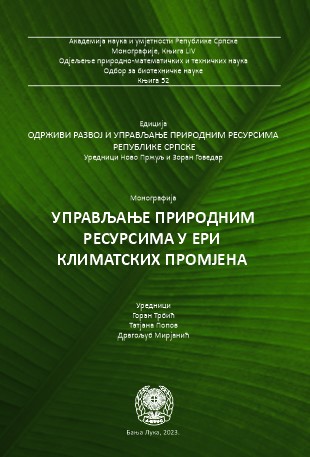Geothermal Potential of the Republic of Srpska and the Possibility of Using Low Enthalpic Subgeothermal Resources in the Function of Climate Changes Prevention
DOI:
https://doi.org/10.7251/EORU2308425BKeywords:
Renewable energy geothermal energy, subgeothermal sources of low enthalpy, climate changeAbstract
Geothermal energy is the part of the geothermal heat that can be used as a useful heath for its direct use or for the conversion into other forms of energy. Geothermal and hydrogeothermal energy are unique sources of renewable energy whose main advantages are in the easy and clean way of use with relatively simple and cheap technology. The rough division of the territory of Republic of Srpska, from the aspect of potential geothermal energy, was performed during not so extensive research that were carried out in the past and based on the registered occurrences of thermal and thermomineral water that occurs in this area. The division was made into two drastically different zones, the zone of Outer Dinarides ‒ the southern part of the territory of the Republic of Srpska, with relatively weaker geothermal characteristics and the zone of Inner Dinarides and the southern part of the Pannonian Basin ‒ the northern part of the Republic of Srpska with exceptional geothermal characteristics, especially in the Semberija area. The potential of these areas needs to be confirmed by detailed systematic hydrogeological research because most of the conducted research so far has been for the needs of oil and gas discovery and exploitation. The usage of geothermal energy in our areas and in the region is insufficiently represented and it is reduced just on the spa tourism and in some places for heating facilities, people are still not adequately introduced with this valuable resource that can largely replace nonrenewable energy and thus affect the preservation of the environment and the reduction of climate change.
